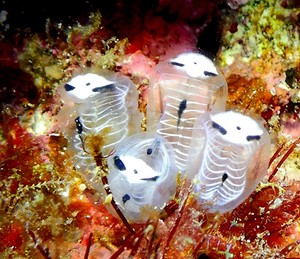By TSUTOMU ISHII/ Staff Writer
October 10, 2020 at 08:00 JST
YONEZAWA, Yamagata Prefecture--Nasty scratches on metallic surfaces may be a thing of the past, thanks to a new material that can instantly repair itself when damaged.
Japanese researchers developed a high-molecular, self-healing substance to be used for a coating material to protect the surfaces of automobiles and electronic materials.
The polymer material was developed by Go Matsuba, a professor of high polymer properties and functions at Yamagata University’s Graduate School of Organic Materials Science, with scientists from Osaka University.
“The point is how ingredients were mixed,” Matsuba said at the regular news conference organized by Yamagata University’s Faculty of Engineering on Sept. 9. “They were not blended together with chemicals or by other means, but mixed simply and strongly in equipment. Our achievements will also lead to lowered costs.”
As plastic, rubber, synthetic resin and other high-molecular substances are light and soft and easy to produce, they are essential for making daily goods. But the issue of environmental pollution caused by plastic waste has become a concern.
Because of that, strong high-molecular materials with longer lifespans need to be created, and scientists all over the world are engaging in research to make self-fixing materials a reality.
During the news conference, the researchers said that the polymer material was completed by mixing in a blender two different kinds of high-molecular compounds synthesized by Osaka University.
If the durable, self-repairing material is used to form a coating membrane, the treated surface can fix its damage within a few seconds, according to the scientists.
Working with Shunsuke Murayama, a first-year student in the master course of the graduate school, Matsuba analyzed the molecular structures before and after the new material was harmed to ascertain detailed mechanisms.
The results showed molecules in the substance can easily move around because two types of compounds were strongly mixed, rendering it possible for the finished material to quickly heal its damage.
The findings have been published in the international academic journal Advanced Materials.




















Stories about memories of cherry blossoms solicited from readers
Cooking experts, chefs and others involved in the field of food introduce their special recipes intertwined with their paths in life.
A series based on diplomatic documents declassified by Japan’s Foreign Ministry
A series on the death of a Japanese woman that sparked a debate about criminal justice policy in the United States
A series about Japanese-Americans and their memories of World War II
Here is a collection of first-hand accounts by “hibakusha” atomic bomb survivors.